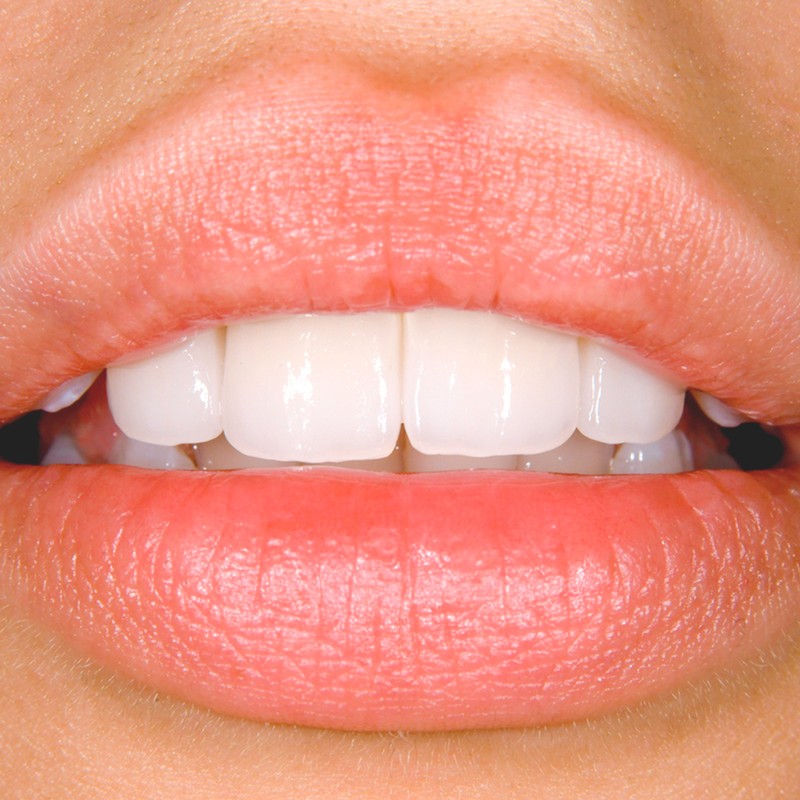Everything You Need To Know About Veneers
Firstly, what are veneers?
“They are custom-made thin shells made from either porcelain or a composite resin that are permanently bonded to the front of your teeth,” explains cosmetic dentist Rhona Eskander. Permanent is the operative word here: veneers are an irreversible treatment and a lifetime commitment. Depending on the type of veneer and how well you look after them, they will need to be replaced every seven to 12 years.
Who are they most suited to?
“By working closely with a dentist, you can find the best way to improve the appearance of your smile and determine if you’re a good candidate for veneers,” says Rhona. For example, whitening can improve colour; orthodontic treatments like Invisalign can straighten; and bonding can remedy chips or gaps.
Veneers will be the best port of call in some cases. “Some people have poorly shaped teeth which can only be rectified with veneers and not straightening alone,” advises Rhona. As cosmetic dentist Krystyna Wilczynski explains, “In one treatment, veneers can refine and contour teeth, fix chips or broken teeth, close spaces, correct alignment and improve colour.”
What is the difference between porcelain and composite?
There are a few key differences. “Porcelain, a type of ceramic, is made in the laboratory,” says Krystyna, “while composite veneers are hand crafted from an acrylic resin directly onto the tooth.” This affects both the durability and maintenance: “Porcelain is very durable and the material itself will last ten to 12 years. They maintain a high polish and are stronger than composite veneers, which last five to seven years and tend to pick up more stains, chip more easily and require more maintenance,” adds Krystyna. The process of application is different too: “Composite veneers can be installed in a single appointment but porcelain veneers require a longer process,” emphasises Rhona. Naturally, there’s also a price difference: porcelain veneers come in much more expensive than composite ones.
How are porcelain veneers applied?
The typical process takes two appointments and a local anaesthetic is usually required. At the first appointment, the enamel of the tooth is removed with a drill to make space for the veneer. “Depending on the case, this can be no or very little preparation, or quite destructive,” says Rhona. Once the teeth have been drilled down, an impression of the tooth is taken and temporary veneers are fitted. At the second appointment, the temporary veneers are removed and replaced with the porcelain veneers created from the impression sent to the laboratory. “The adhesive is placed on the preparation, then the cement and the veneer is placed for exact fit and contour. The veneer is then light cured to attach it to the tooth structure,” adds Rhona.
And what about composites?
Composite veneers tend to be done in one appointment with a follow-up polish. “After preparing and reshaping the teeth, the dentist will choose a shade and then sculpt the acrylic resin directly on your teeth,” says Rhona. The material then hardens under a special light which bonds it to the teeth. This is followed by smoothing and polishing to give a natural appearance.
Is there any downtime?
The downtime is pretty limited. “There’s only a few hours of tenderness,” reckons Rhona. Krystyna advises no food or drink for two to three hours afterwards.
How should you look after your teeth afterwards?
Committing to an oral hygiene routine is important whatever teeth treatments you’ve had. “Brush twice daily with an electric toothbrush, floss daily and see a hygienist twice a year,” Krystyna recommends. “Consider limiting coffee and other stain-inducing foods,” advises Rhona. “Keep in mind that veneers will need to be replaced at some point, no matter how well you take care of them, but proper oral hygiene will help them last as long as possible.”
How should you choose a dentist for your veneers?
With such a permanent treatment, it’s important to shop around before choosing which dentist to go for. “The smile design process for veneers requires artistic knowledge and expertise,” says Rhona. “Look at the dentist’s experience (specifically in cosmetic dentistry), qualifications and surgery equipment,” Krystyna advises. Always request before and after photos, and assess whether you’re happy with their work before booking in for a consultation.
How much will it cost?
Dentists charge per tooth, with porcelain veneers much more expensive than composite ones. Rhona charges £850 per tooth for porcelain and £350 per tooth for composite; Krystyna charges £700 and £200 respectively. Some people may only get one tooth done (for example, if it is badly damaged) or just their front teeth. If you’re going for the whole set, you’re looking at around £20,000 for porcelain and at least £6,000 for composite.
DISCLAIMER: We endeavour to always credit the correct original source of every image we use. If you think a credit may be incorrect, please contact us at info@sheerluxe.com.


